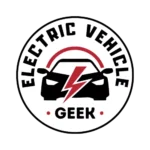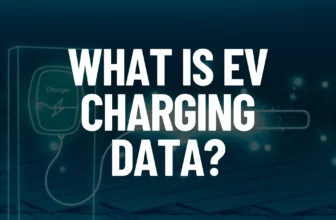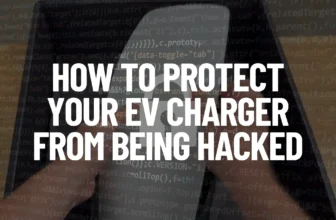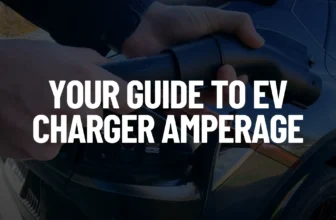Let’s say you need to replace your home EV charger, or, maybe your friend wants to use your EV charger receptacle with their charger. Whatever the reason, a common question we hear is whether EV charger installations can be interchanged – meaning if different brands or types of chargers can be used interchangeably with your outlet, or electric vehicle branch circuit.
Unfortunately, there isn’t a simple answer. The purpose, construction, and function of residential EV charger installations are dependent on the type of charger that was presented to the electrician or EV charger installer, which determined the circuit breaker type and size, and the wiring of the electric vehicle charger circuit, as well as national codes and regulations.
Table of Contents
The Anatomy of an Electric Vehicle Branch Circuit.
Accurately replacing or interchanging your EV charger will keep your installation up to code and maintain service listing approval. Following the National Electrical Code (NEC) ensures compliance with electrical safety standards while adhering to local building codes guarantees that installations meet regional requirements for permits and inspections.
Some important characteristics of an electric vehicle branch circuit include:
- Voltage: This refers to the electrical pressure that will be delivered to the EV charger. Common voltages for EV charging are 120V (Level 1 EV charging), 240V (Level 2 EV charging), and higher voltage Level 3 DC fast charging (+400V).
- Current: This is the amount of electricity that will flow through the circuit to charge the EV. It’s determined by the charger’s power rating and will influence cable size selection.
- Power: This is the rate at which electrical energy is transferred (measured in watts). It depends on the desired charging speed and will impact circuit capacity.
- Safety Ratings: The circuit components need to be safety-rated for EV charging applications. This includes considering ground fault protection and potential arc faults.
- Installation Style: This is the installation style of the charger which is dependent on whether the charger is a plug-in EV charger or a hardwired EV charger.
- Indoor and Outdoor EV Chargers: Refer to charging stations designed for specific installation environments.
Voltage Requirements
Understanding the voltage requirements of an EV charger is crucial. The voltage needed depends on the type and level of the charger: Level 1 chargers require 120V, Level 2 chargers need 240V, and Level 3 chargers typically use over 400V.
Your home’s available voltage is determined by its electrical source, which also dictates the voltage of your electrical panel. Most American homes are equipped with a single-phase 120/240V electrical panel. Installing a Level 3 charger requiring 400V necessitates upgrading to a three-phase electricity connection and upgrading the electrical panel accordingly.
120/240V EV charger installation
The diagram below shows the typical American 120/240V EV charger installation, which supports Level 1 and Level 2 EV charger installations.
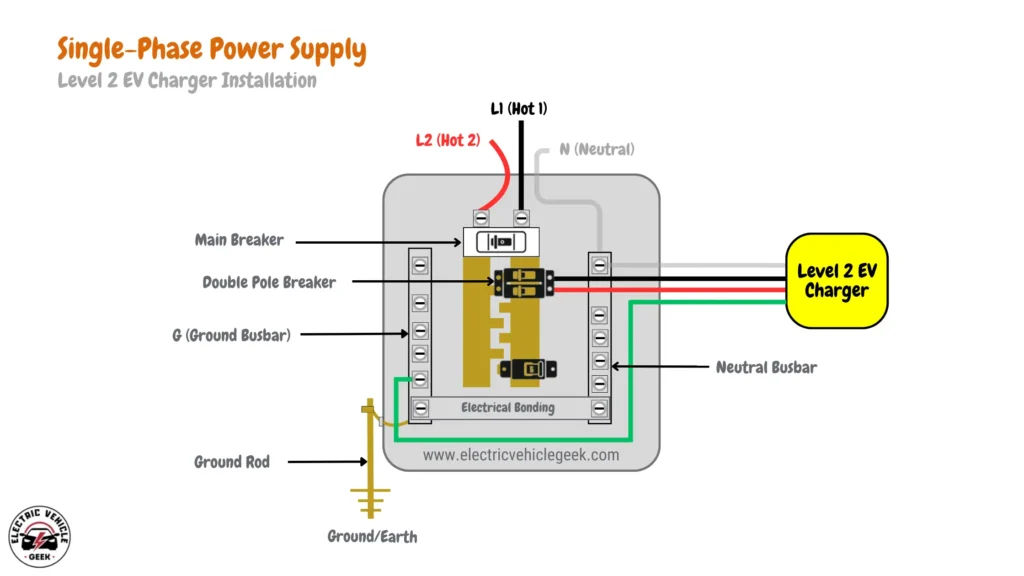
+400V EV charger installation
The diagram below shows a +400V EV charger circuit that supports high-powered Level 2 EV chargers such as a 22kW EV charger and Level 3 EV chargers.
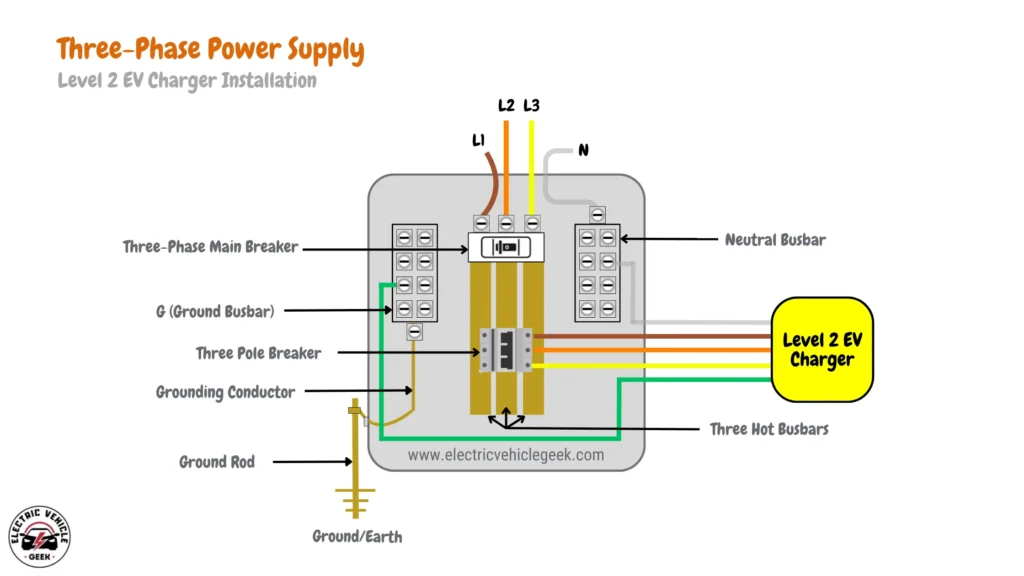
Upgrading a home’s electrical system to handle +400V for DC fast charging is not practical due to the significant infrastructure changes and costs involved.
Current Rating Requirments
The current ratings/maximum output (measured in amps) of the replacement EV charger also should match the current rating of the existing installation, the current ratings of the EV charger determined the amperage of the circuit breaker, and the wiring gauge of the EV charger installations, the table below is a guide on the current ratings of an EV charger, the circuit breaker used in accordance to NEC 80/20 rule, and the size of the EV charger installation wiring.
Level 1 EV Charger Current Ratings
Level 1 EV chargers typically have a low current rating, ranging from 12-16 amps.
| Current Ratings | Circuit Breaker Used | Circuit Wiring Gauge |
|---|---|---|
| 12 Amps | 15 Amps | 14 AWG |
| 16 Amps | 20 Amps | 12 AWG |
Level 2 EV Charger Current Ratings
Level 2 Chargers operate between 24-48 amps, providing a significant boost in charging speed compared to Level 1.
| Current Ratings | Circuit Breaker Used | Circuit Wiring Gauge |
|---|---|---|
| 24 Amps | 30 Amps | 10 AWG |
| 32 Amps | 40 Amps | 8 AWG |
| 40 Amps | 50 Amps | 6 AWG |
| 48 Amps | 60 Amps | 4 AWG |
Level 3 EV Charger Current Ratings
These chargers require much higher currents, often exceeding 100 amps.
Power Ratings Requirements
The power ratings, measured in watts (W) or kilowatts (kW), of an EV charger dictate whether a replacement or upgrade is necessary for your EV charger installation. These ratings are closely tied to voltage and current specifications. The power rating determines the charging speed, indicating how quickly the charger can deliver electricity to your car’s battery.
Here’s a breakdown of power requirements for different charger levels:
Level 1 EV Charger Current Ratings
Level 1 chargers typically have a low power rating, ranging from 1.4 kW to 1.8 kW.
| Power Ratings | Current Ratings | Circuit Wiring Gauge |
|---|---|---|
| 2.8 kW | 15 Amps | 14 AWG |
| 3.8 kW | 20 Amps | 12 AWG |
Level 2 EV Charger Current Ratings
Level 2 chargers offer a significant increase in power rating, typically ranging from 6 kW to 19.2 kW.
| Power Ratings | Current Ratings | Circuit Wiring Gauge |
|---|---|---|
| 5.7 kW | 30 Amps | 10 AWG |
| 7.6 kW | 40 Amps | 8 AWG |
| 9.6 kW | 50 Amps | 6 AWG |
| 11.5 kW | 60 Amps | 4 AWG |
Level 3 EV Charger Current Ratings
Level 3 DC Fast Charger (Fastest Charging): These public chargers boast the highest power ratings, ranging from 50 kW to 350 kW (or even higher in some cases).
Safety Features and Accessories
Different chargers have different safety ratings that determine their installation, EV charger safety features such as grounding, overcurrent, and overvoltage protection, environmental considerations, and arc fault protections are safety features of an EV charger that determine whether it’s compatible with your existing EV charger installation purposes or an upgrade of the electric vehicle branch circuit is required for the EV charger installation.
EV Charger Grounding Features and Accessories
EV charger grounding should not be a major concern as all EV charger installations are always grounded, as shown in the diagram below:
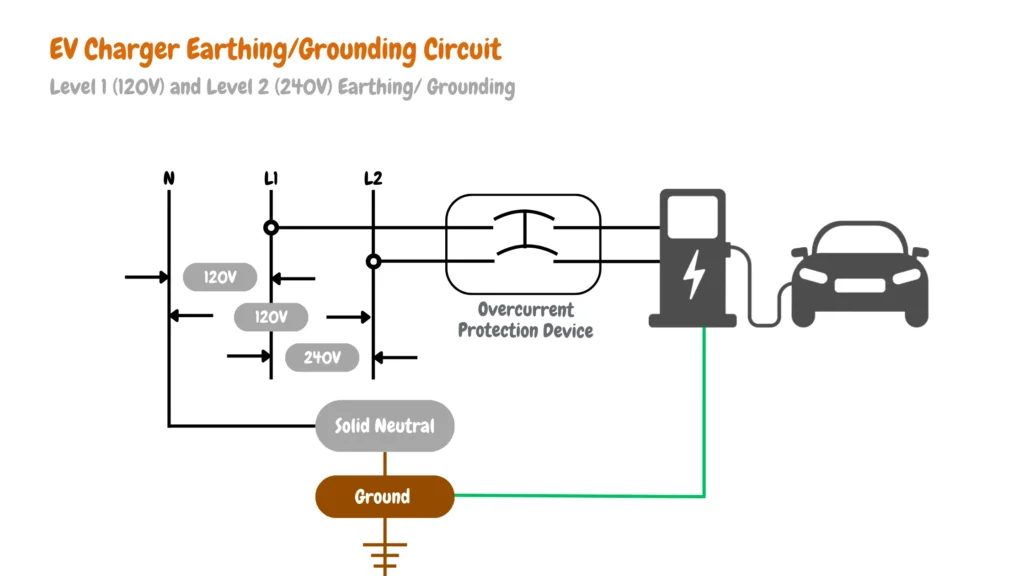
However, we recommend testing the grounding of the EV charger before replacement as wires and devices used in grounding might wear out over time causing EV charger installations earth leakage and faults. We also recommend the right grounding wire sizes are used depending on the replacement of the EV charger.
Here is a comprehensive guide on EV charger earthing/grounding highlighting all you need to know about EV charger grounding and wiring: EV Charger Earthing Guide
EV Charger Overcurrent Protection Features and Accessories
EV charger overcurrent protection features and accessories might be installed in your existing EV charger installation that might cause your replacement EV charger not to function as intended, features that can be added to your existing EV charger circuit for overcurrent protection might include circuit breakers, fuses, and Ground Fault Circuit Interrupters (GFCIs) such as GFCI Circuit breakers and GFCI outlets.
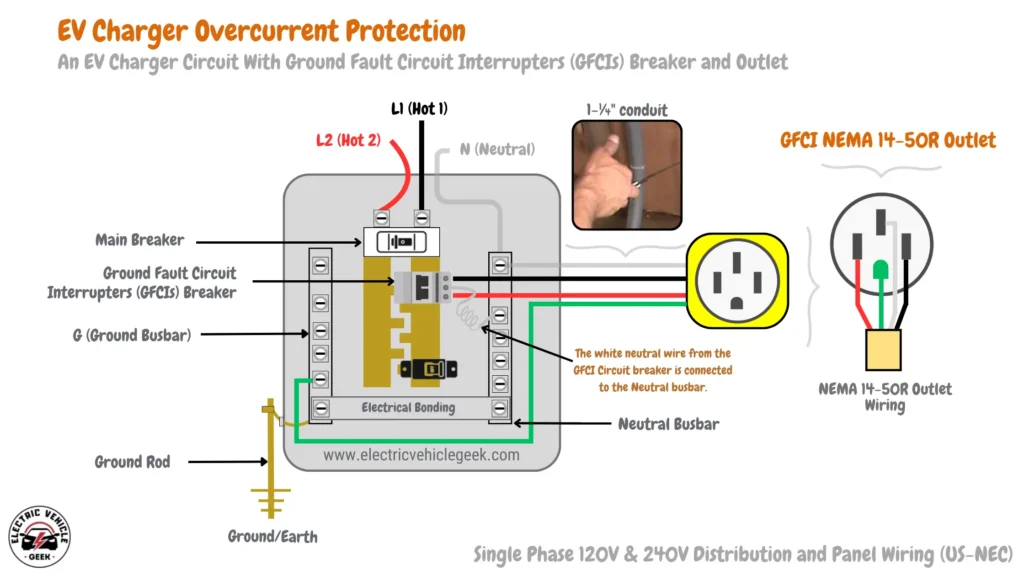
EV charger overcurrent protection features in an existing EV charger might not be compatible with your replacement EV charger installation, in other instances, your new replacement EV charger might require EV charger overcurrent protection features and accessories that are not available in your existing electric vehicle branch circuit making replacements not feasible or upgrades to your existing electric vehicle circuit.
EV Charger Voltage Fluctuation Protection Features and Accessories
Your existing EV charger installation circuit might include voltage fluctuation protection devices installed such as voltage regulators, voltage monitors, or transient voltage suppressors (TVS), which might not or compatible with your replacement EV charger.
Voltage fluctuation devices are added to an EV charger installation, especially those with renewable EV charger installations to monitor and manage voltage fluctuation such as overvoltage, undervoltage, and voltage outages caused by changes in load, generation, or network.
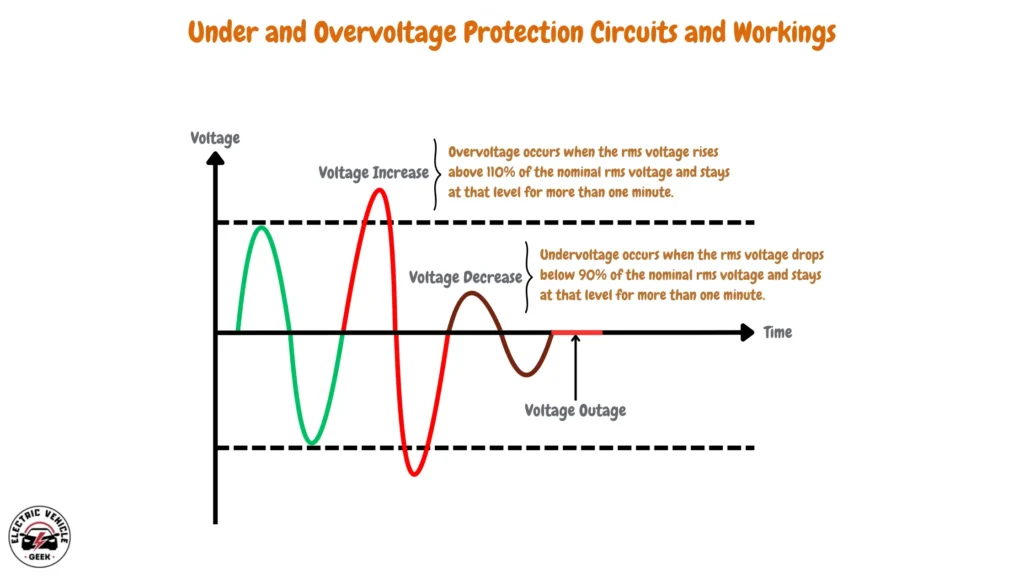
It’s important to make sure that the existing voltage fluctuation monitoring and fluctuation devices are compatible with your replacement EV charger, case you have a voltage-sensitive and expensive EV charger that you fear might be damaged due to voltage fluctuations, we recommend consulting a licensed electrician or EV charger installer to upgrade your electrical circuit before EV charger replacement.
EV Charger Surge Protection Features and Accessories
Another feature and accessory you should check before replacing an EV charger are surge protection features and accessories, Surge protection devices defend against sudden, temporary increases in voltage (surges or transients) that can damage electrical equipment installed in the electric vehicle branch circuit, the charger and the electric vehicle itself.
EV charger surge protection features and accessories you should check to include surge protectors, metal oxide varistors (MOVs), and spike suppressors which might be installed to protect the circuit and electric equipment connected to the circuit from damage during lightning strikes, power grid switching, or other electrical disturbances.
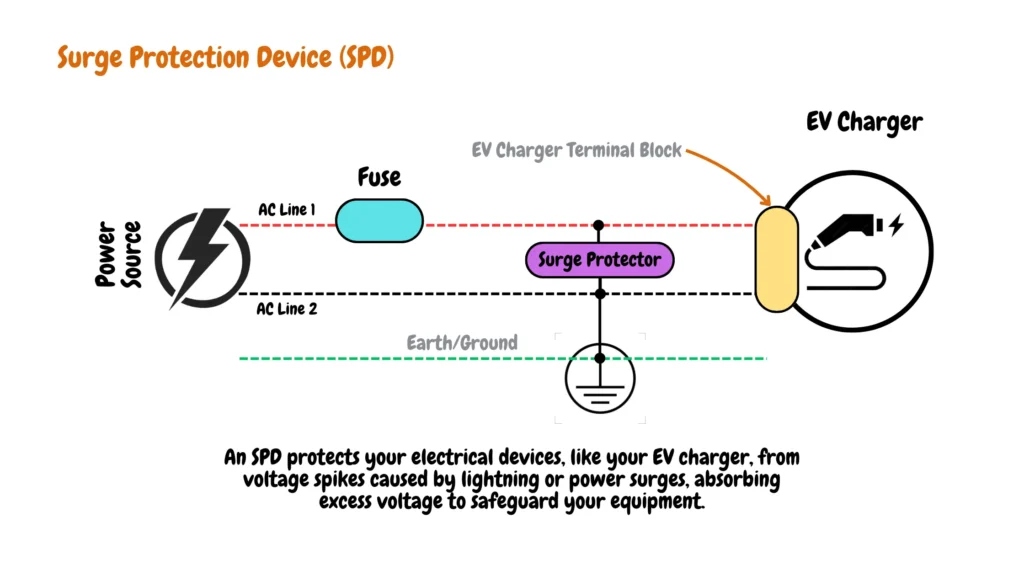
It is advisable to assess your current electrical setup for surge protection devices before replacing or upgrading an EV charger for compatibility purposes.
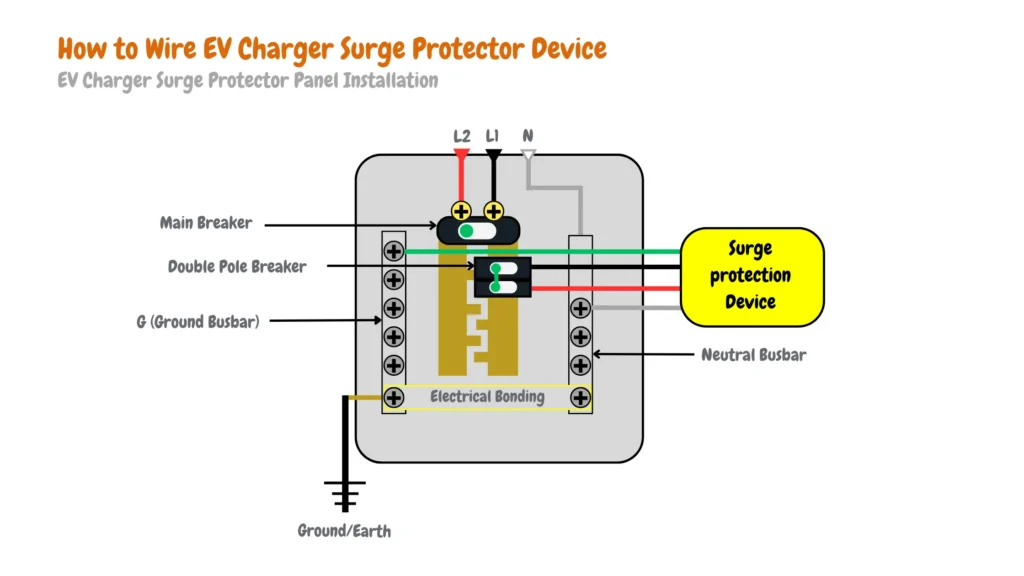
Compatibility with any replacement EV charger should be confirmed, as mismatched devices may compromise the effectiveness of surge protection. Incompatible setups could lead to unpredictable performance in both the EV charger’s operation and its safeguarding against electrical surges.
Arc Fault Protection Features and Accessories
We also recommend inspection of Arc fault circuit interrupters currently installed in your electric vehicle branch circuit, they include outlets, and circuit breakers that detect and respond to electrical arcs in your home EV charger installation.
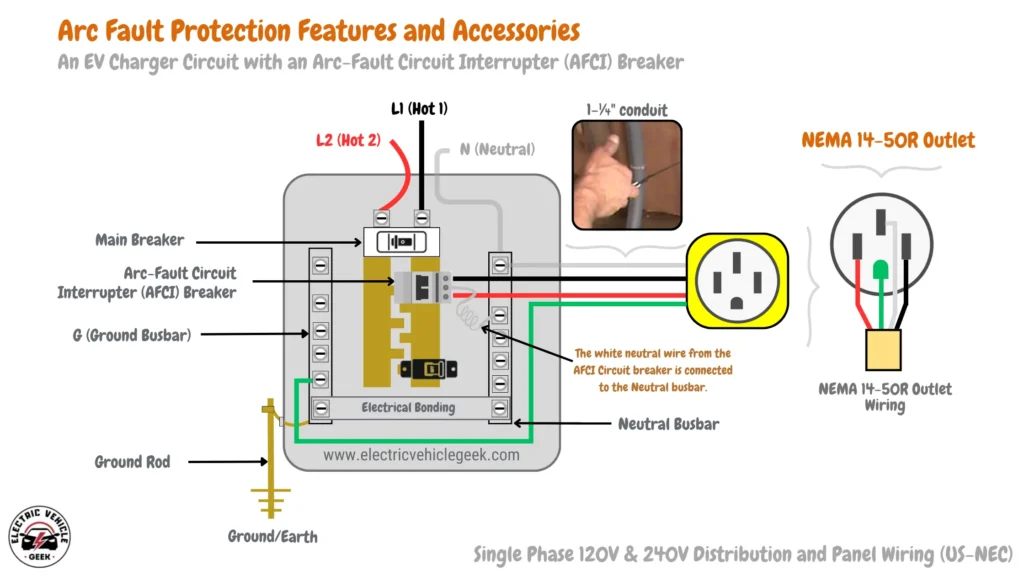
Ensure compatibility of arc fault accessories with any replacement EV charger. If the new EV charger necessitates arc fault circuit interrupters, consider upgrading your electrical system accordingly for optimal functionality and safety.
Installation Styles: Plug-in vs. Hardwired EV Chargers
Consideration should also be given to the installation style of both the existing and replacement EV chargers, which can either be plug-in or hardwired configurations. These methods differ significantly in how the circuits are wired and should be aligned carefully with the specific requirements of the EV charger being installed or replaced.
Plug-in EV charger Replacement
Plug-in EV chargers are typically connected to a NEMA 5-15 for Level 1 chargers or a NEMA 14-50 for Level 2 chargers.
NEMA 5-15 for Level 1 Chargers Replacement
The diagram below illustrates the wiring of a NEMA 5-15 outlet for a plug-in EV charger, depicting how the neutral, ground, and hot wires connect to the outlet terminals.

NEMA 14-50 for Level 2 Chargers Replacement
The diagram below illustrates the wiring of a NEMA 14-50 outlet for an EV charger, showing the connection of the neutral, ground, and two hot wires to the outlet terminals.

Hardwired EV Charger Replacement
Level 1 and Level 2 EV charger installations are different; you cannot replace a hardwired Level 1 EV charger with a Level 2 EV charger or vice versa without upgrading your electrical systems such as the electrical panel, voltage capacity, circuit breaker, and wiring.
The image below shows a Level 1 EV charger circuit from the 120/240V electrical panel, single-phase circuit breaker, and wiring to the EV charger installation junction box where a hardwired Level 1 EV charger is installed. (NEC -US)

The image below illustrates a Level 2 EV charger circuit, starting from the 120/240V electrical panel with a double-pole circuit breaker, and continuing through the wiring to the EV junction box where a hardwired Level 2 EV charger is installed (NEC – US).

For a functional replacement of a hardwired EV charger, several aspects must match or be upgraded:
- The electrical panel must support the voltage requirements of the new charger.
- The electrical system’s capacity should meet the power demands of the replacement charger.
- The circuit breaker must be appropriately sized and rated for the new charger.
- The wiring should be capable of handling the electrical load and configuration of the replacement charger.
Ensuring these components align correctly is crucial when replacing a hardwired EV charger to ensure proper functionality and safety.
Indoor and Outdoor EV Chargers
Indoor and outdoor EV chargers are not interchangeable due to the specialized safety features of outdoor chargers designed to withstand weather conditions like rain, snow, and sunlight. When replacing a charger, ensure to use an indoor charger with another indoor charger, and an outdoor charger with another outdoor charger.
Before replacing a charger, it’s essential to confirm that the outdoor charger is suitable for outdoor use and adequately shielded from environmental elements. Additionally, verify that your electrical panel and wiring can support the new charger’s voltage and power requirements, taking into account potential differences between indoor and outdoor installations.
Evaluate the installation site for accessibility, proximity to the electrical panel, and the parking spot for the vehicle. Outdoor installations might involve trenching for wiring, whereas indoor replacements could necessitate rerouting cables.
Outdoor chargers require extra safety precautions such as ground fault protection and weatherproof EV charger lockable enclosures to prevent theft, electrical hazards and ensure user safety.
Conclusions.
In conclusion, while electric vehicle (EV) charger installations can vary significantly in terms of voltage requirements, current ratings, power ratings, and safety features, the interchangeability of installations depends largely on compatibility with the EV’s specifications and the electric vehicle charging infrastructure available.
For plug-in installations, such as those using NEMA 5-15 or NEMA 14-50 outlets, replacement options are feasible with consideration of circuit capacity and outlet compatibility. Meanwhile, hardwired installations offer a more permanent solution, requiring careful planning to ensure proper wiring and compliance with safety standards.
Whether for indoor or outdoor settings, adherence to grounding, overcurrent protection, voltage fluctuation protection, surge protection, and arc fault protection is crucial to safeguard both the EV and the charging equipment.
In essence, while there are various installation styles and technical specifications involved, the primary focus should always be on ensuring safety, compliance, and efficient charging capability tailored to the specific needs of the electric vehicle in question.

James Ndungu is a certified EV charger installer with over five years of experience in EVSE selection, permitting, and installation. He holds advanced credentials, including certification from the Electric Vehicle Infrastructure Training Program (EVITP) and specialized training in EV charging equipment and installation, as well as diplomas in EV Technology and Engineering Fundamentals of EVs. Since 2021, James has tested dozens of EV chargers and accessories, sharing expert insights into the latest EV charging technologies.
